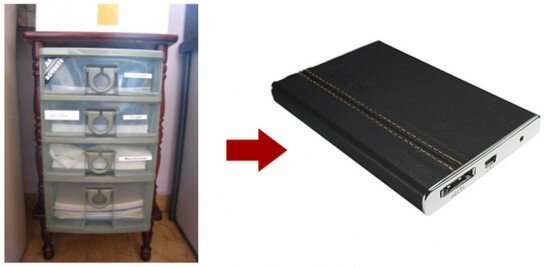Learning how people store things differently
On a recent sunny morning, my neighbour Uncle Harry dropped by seeking my help in a computer-related problem. I bet I’m not the only one that plays tech support to older generations and while I suppose it can frustrate others, I didn’t really mind. So off I went, hopping over the wall to assume the role of a tech-savvy youngster.
Before I started poking around, I asked if he backed up his files since I didn’t want him to lose any precious data at my expense.
For a split second Uncle Harry drew an awkward blank stare, but before I could simplify things, he went to a 4-drawer plastic cabinet in the corner of the room and started rifling through one of them, before pulling out a portable hard disk.
“When Jenny (his daughter) finds my computer too full, she transfers some stuff over to here. When I want to listen to music from this hard drive, I just insert it in here”, he states, pointing to the USB port.
Okay, so now I understand Uncle Harry sees the hard disk a little differently from those of us, like myself, who are more tech aware. He assigns meaning to it, rather than terminology.
The 4-drawer cabinet is actually where Uncle Harry keeps all manner of important things from everyday life, so naturally the hard disk – where Uncle Harry keeps his favourite music, pictures and movies from the Internet – is an extension of this. There are simpler systems in place for storing ‘information’ at home so that it is always easily retrievable. I noted that each of his drawers were clearly labelled on the outside to remind him of the types of things he could find in each drawer. Even without peering inside, Uncle Harry is prompted to recall a mental picture of every drawer’s content, even if he forgets exactly what’s in all of them.
It was a moment of revelation for me; this obvious connection to him was so easy to overlook for someone who worked with technology everyday. I guess it’s easy to neglect this simplified connection in the course of designing computer hardware and software, making them unnecessarily complicated for people outside of those with a background in technology. Today, we are able to easily keep a massive amount of information within a very small space thanks to ‘mass storage devices’ like the hard disk, so organisation, cataloguing and presentation is critical to remembering where we put stuff. Although the actual process of remembering is far more complicated, it suffices to say that we are all, in some way, the same as Uncle Harry.
All of us mentally store information in drawers of different shapes, sizes, colours and configurations, with our own system that sometimes only we can understand. Look around you. Your stationery box, book shelf, filing cabinet, kitchen drawers, wardrobe. How have you stored your personal belongings? Have you ever considered why they have been placed this way? Then, if you look at how other family members arrange their things, how do they compare with yours? I think it’s always good to take a step back and gather a basic understanding of the world, of things we often take for granted. Since this time, I’ve been more mindful of how I can better relate hardware and software design to real people, rather than ‘a market’. I’d also like to know if anyone else has ever had moments like this – please drop a comment below!














